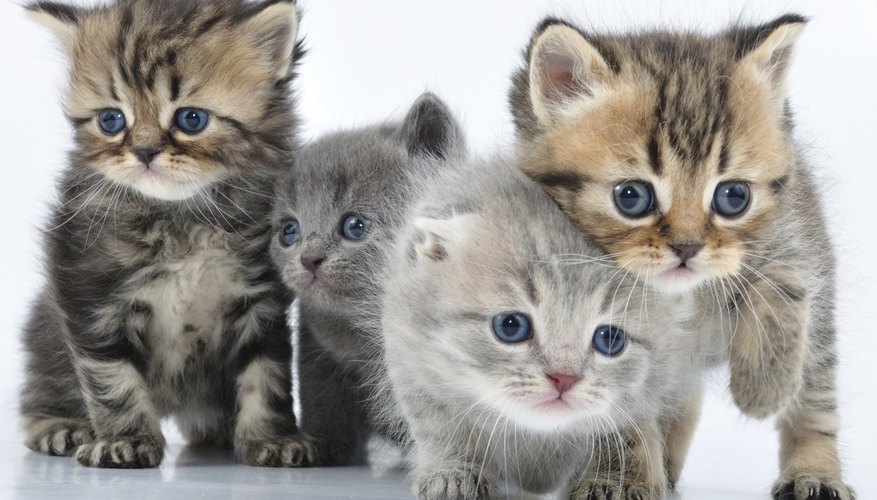Orphaned kittens or those whose mothers are unable to feed them need a special formula that supplies additional nutrients essential to growth. They need frequent, regular feedings and a loving hand to give them the nurturing necessary for physical, emotional and psychological growth and development. The process is time consuming, but the end result will be the reward of a happy cat. There are some good commercial kitten formulas, but homemade formulas are just as nutritious, easy and inexpensive.
Ingredients
Combine 89 ml (3 oz) of condensed milk, 85 g (3 oz) of water, 113 g (4 oz) of plain full-fat yoghurt and 3 large egg yolks. Mix well. Do not include the egg whites, and do not substitute cow's or goat's milk. Only make enough formula for a single day's worth of feeding and refrigerate it until you use it.
- Combine 89 ml (3 oz) of condensed milk, 85 g (3 oz) of water, 113 g (4 oz) of plain full-fat yoghurt and 3 large egg yolks.
- Only make enough formula for a single day's worth of feeding and refrigerate it until you use it.
Bottles
Use bottles designed for kittens. Tubes are available for feeding, but the risk of injuring the kitten with a tube is high, so the bottles are preferred, unless the kitten is too weak to suck or nurse from a bottle. Wash the bottles and nipples thoroughly before using. Heat the formula in the bottles to 36.7 degrees C (98 degrees F) by placing the bottled formula in a pan of warm water.
- Use bottles designed for kittens.
- Tubes are available for feeding, but the risk of injuring the kitten with a tube is high, so the bottles are preferred, unless the kitten is too weak to suck or nurse from a bottle.
How to feed
Before feeding the kitten, mix well until there are no lumps in the formula. Keeping the kitten on its belly, with its head upright, tilt the bottle and allow the kitten to suck. If the kitten has a problem sucking, you may use a syringe without a needle for feeding during the first few days and graduate to a kitten bottle by the end of the first week. After each feeding, the kitten should be burped by holding it to your chest with the head elevated. Gently tap its back with your fingertips.
- Before feeding the kitten, mix well until there are no lumps in the formula.
- If the kitten has a problem sucking, you may use a syringe without a needle for feeding during the first few days and graduate to a kitten bottle by the end of the first week.
Frequency
The first week of the kitten's life, feed it approximately 1 ml (0.035 fl oz) ten times per day, every two hours. Each day, increase by 0.5 ml (0.018 fl oz). By the second week, the kitten should be eating approximately 5 to 7 ml (0.176 to 0.246 fl oz) per day.
- The first week of the kitten's life, feed it approximately 1 ml (0.035 fl oz) ten times per day, every two hours.
After the second week, decrease the frequency of feedings to once every four hours. The kitten's weight should double by the end of its second week of life. Gradually add a small amount of soft kitten food to the mixture toward the end of the fourth week.
Once the kitten is able to eat the kitten food without being bottle fed, you may eliminate the feedings in the middle of the night. Stop feeding the kitten formula during the seventh week.
Warnings
Avoid feeding your kitten cow's milk or human baby formula because these ingredients may cause intestinal or stomach distress. Also avoid honey because of the risk of botulism.
